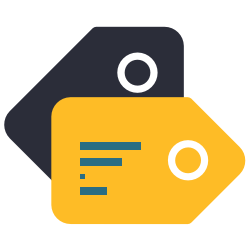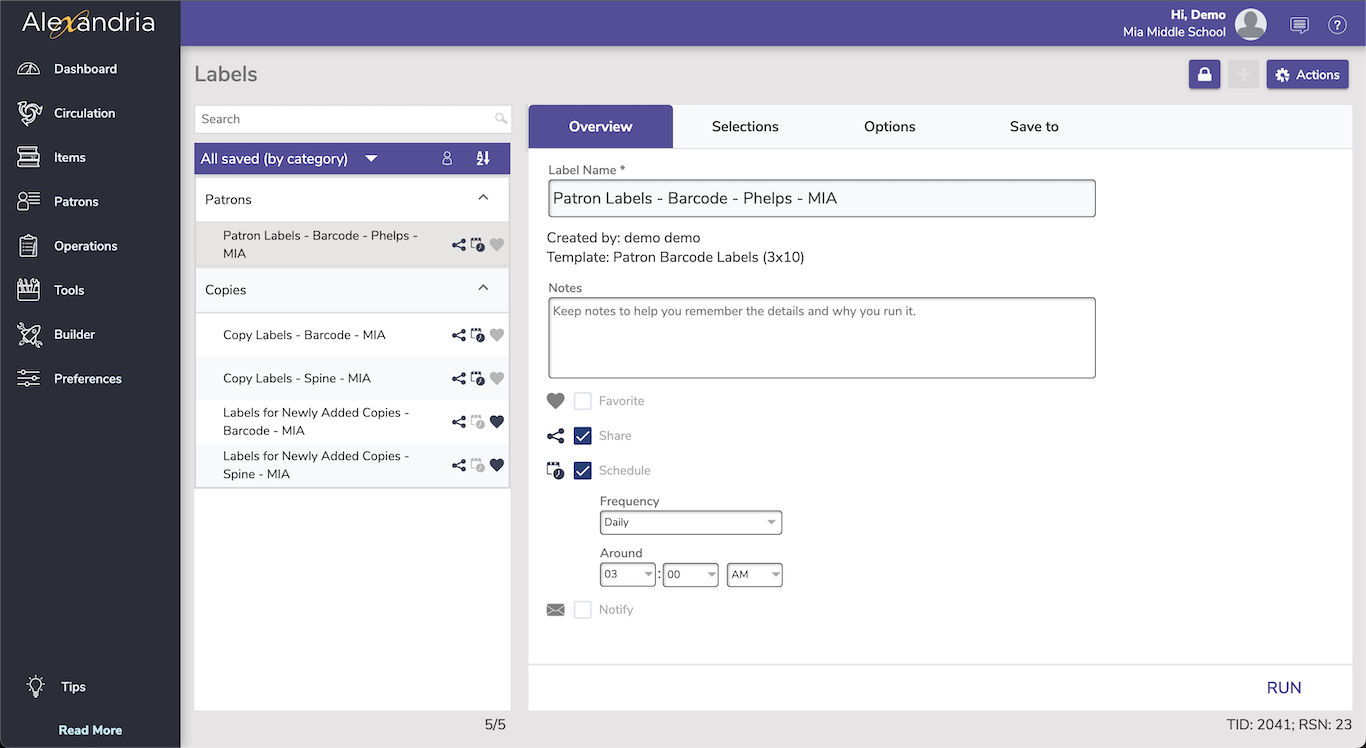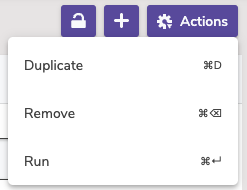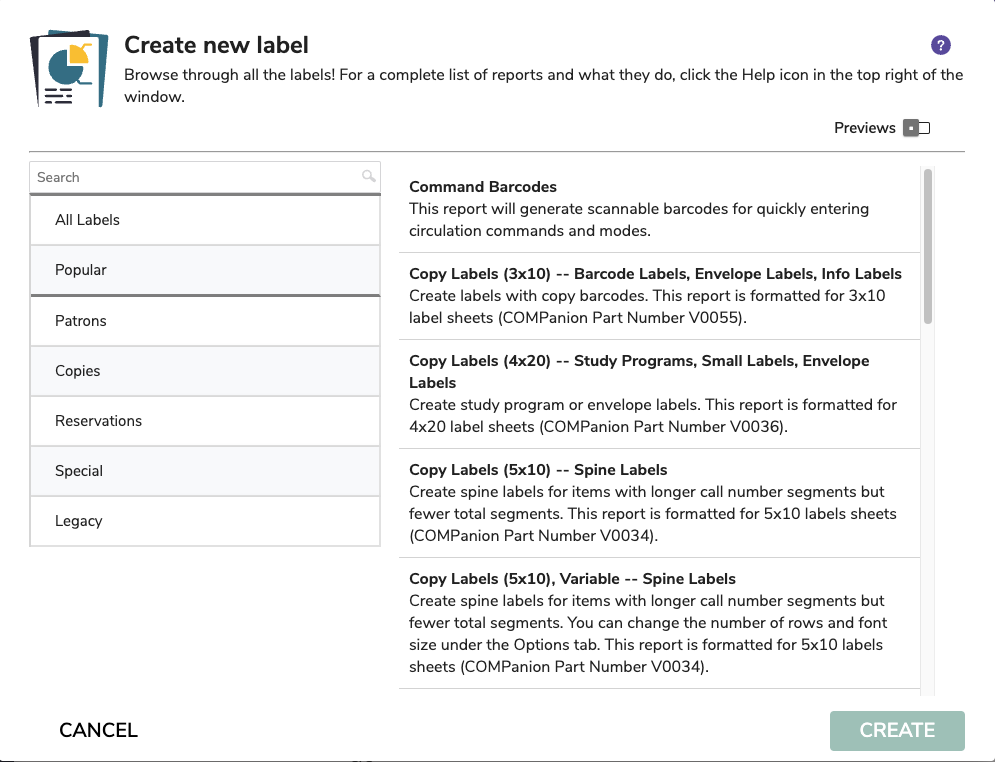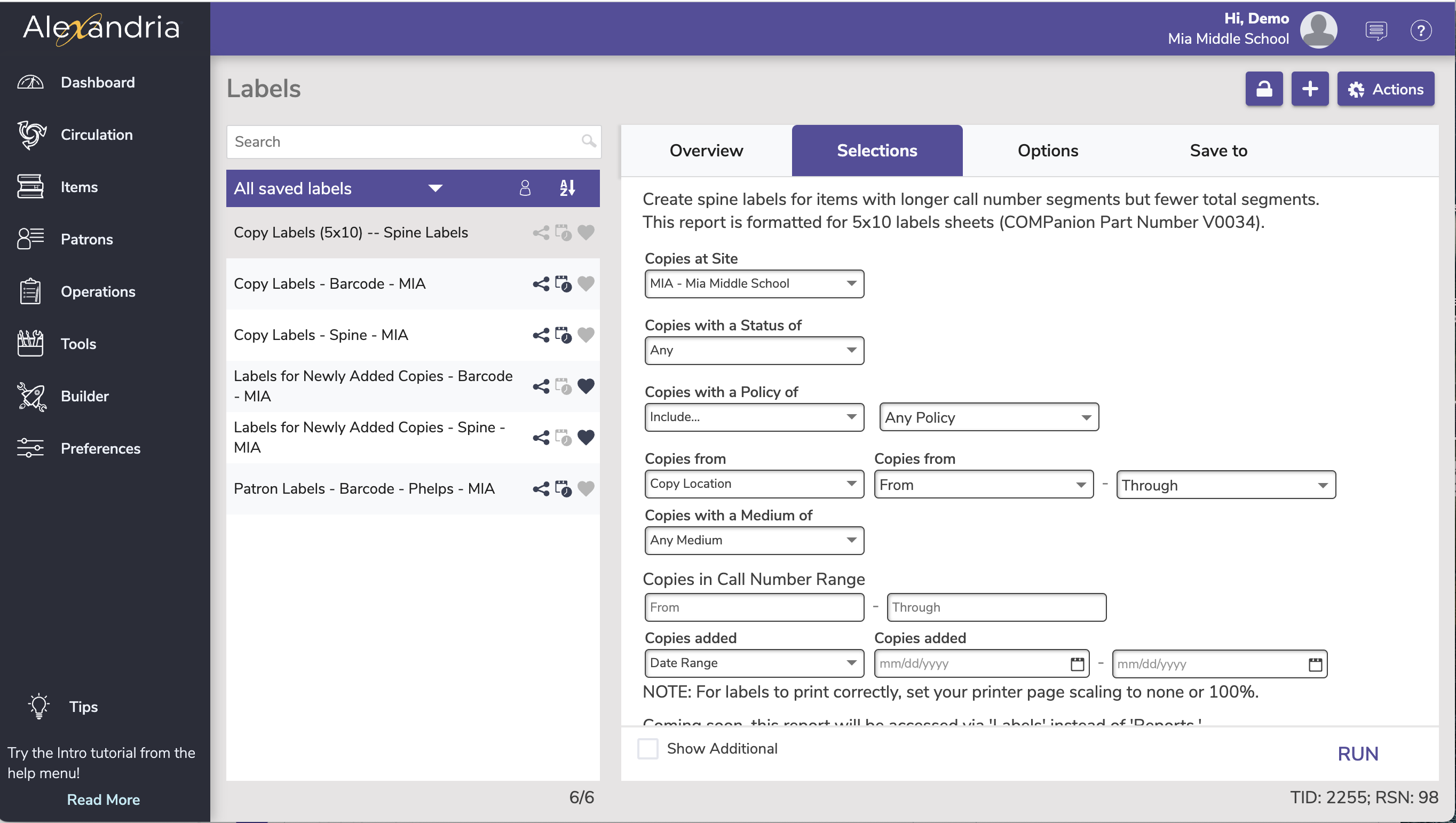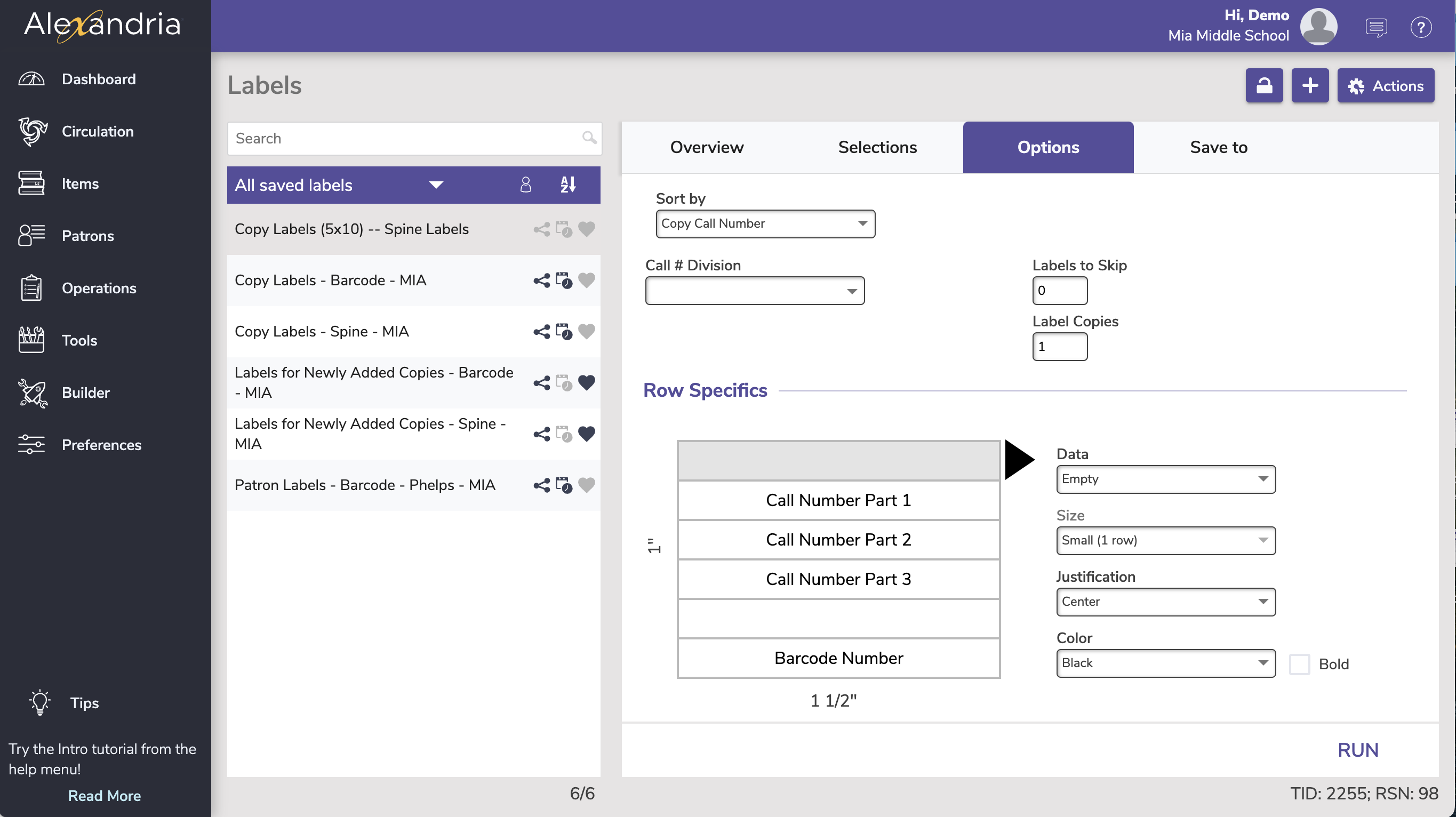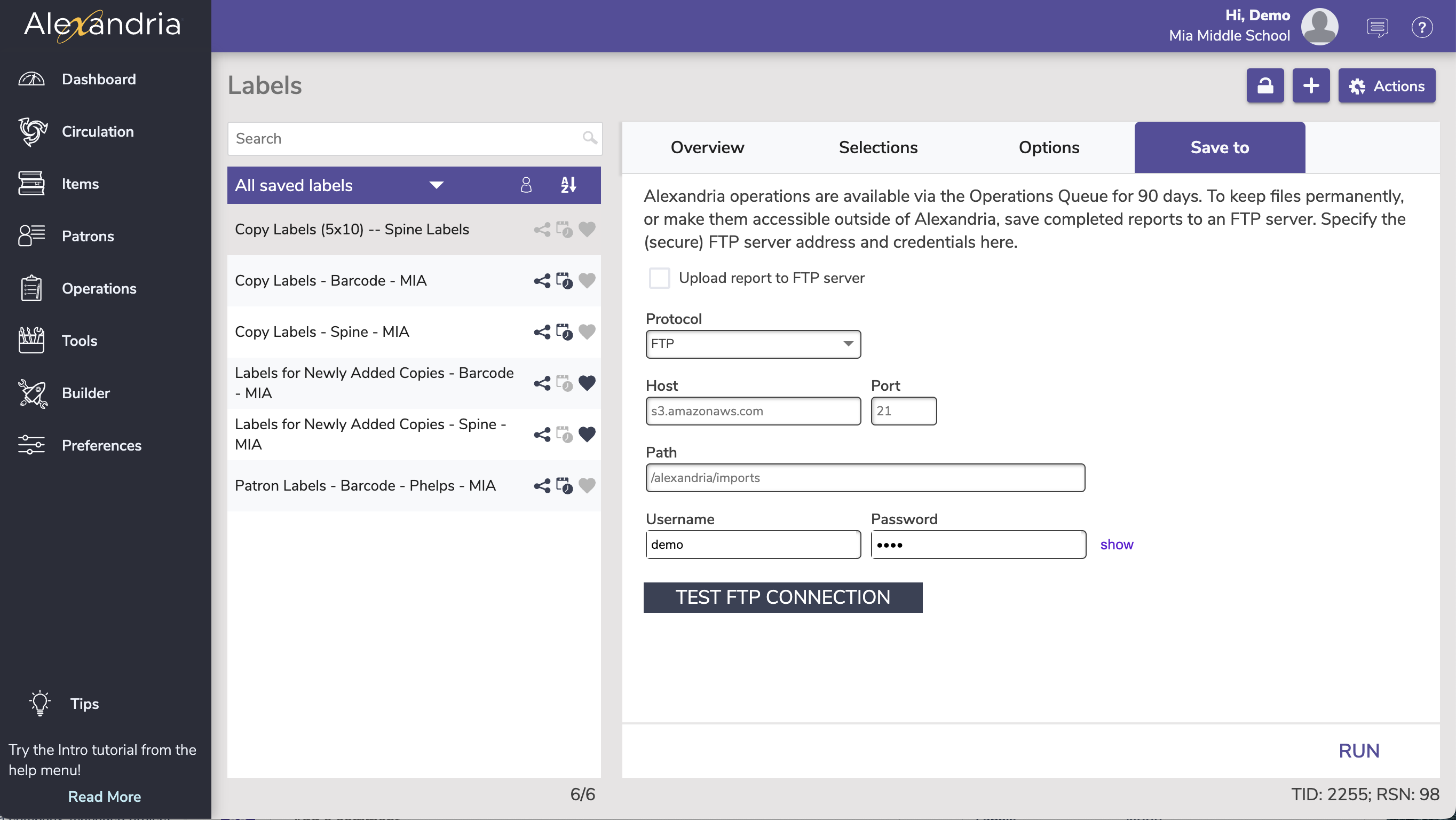Overview
The overview tab shows the Label Name, who created the report, any notes about the labels, as well as selections to Favorite, Share, Schedule, and Notify.
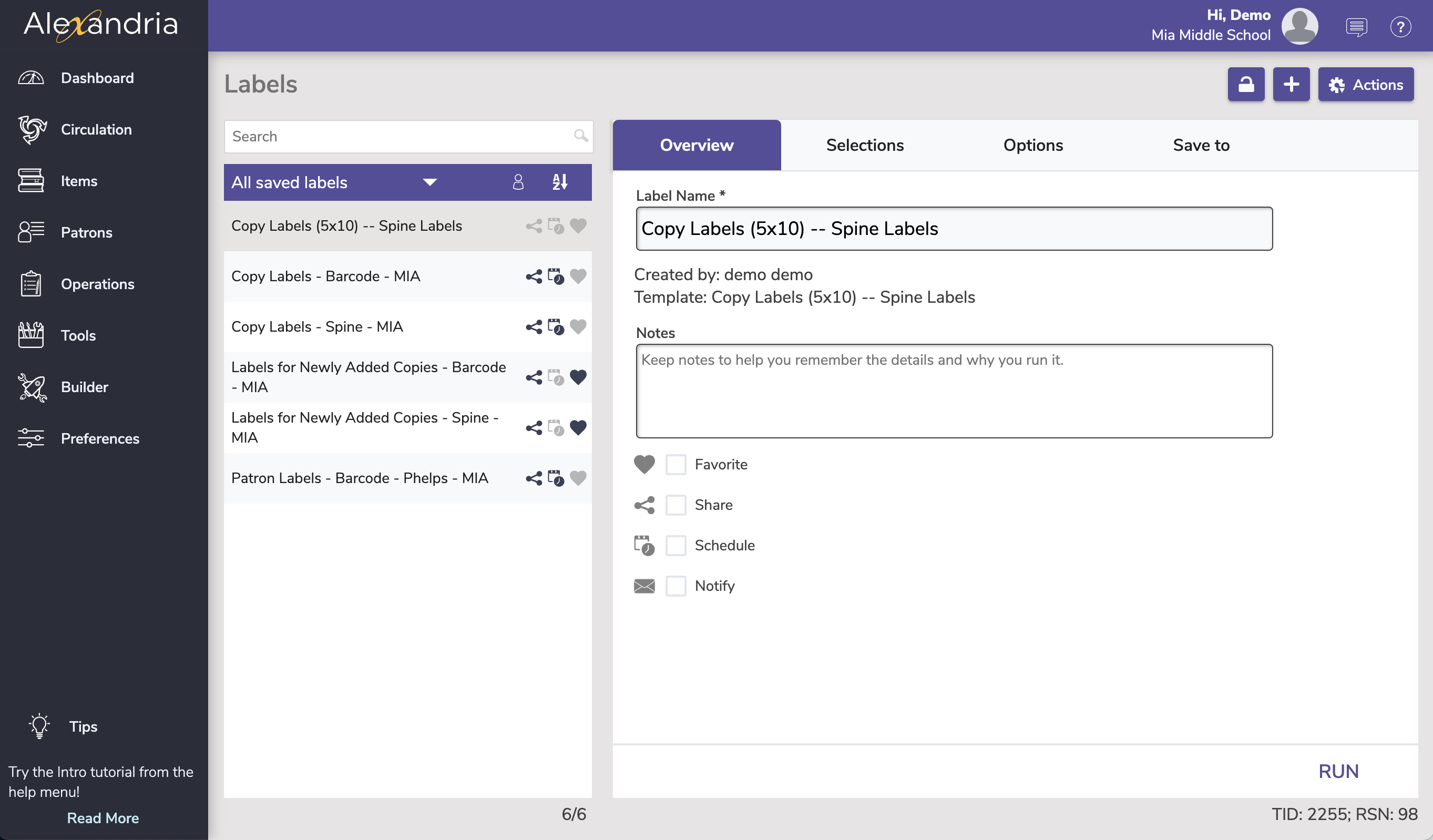
Name. Enter or edit the name of the label here.
Created By. This information is automatically populated with the label creator's name and site ID code.
Notes. You can provide general usage notes about the label here (e.g. Label created for Marjorie - Run daily!).
Favorite. When this option is checked, the label is classified as a “favorite.” This is especially helpful if you find yourself creating the same labels regularly.
Share. Shares the labels across all sites (for accounts with multiple sites).
Schedule. Check this box to unlock the label scheduling capabilities. The Frequency dropdown menu allows you to specify how often you would like to create your labels. You can select Once, Daily, Weekly, Monthly, Yearly from this drop-down menu. Use the Around dropdown to choose a general time for your labels to run.
Notify. Check this box if you want to enable email notification, sent upon label completion.
- Email Notification and Download Link To. In this field, provide the operator email addresses that Alexandria will use to send confirmation emails, a link to the Operation Summary, and a link to download the labels.
- Email Notification To. In this field, provide the email addresses that Alexandria will use to send notification emails when the labels have finished printing and a link to the Operation Summary; you can provide more than one email address separated by commas.



